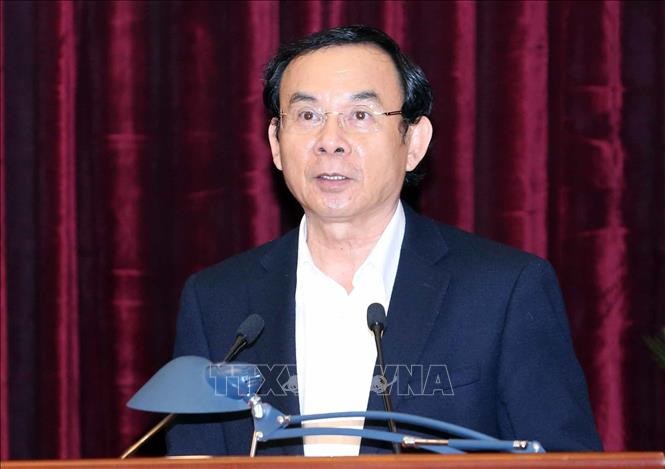(VOVWORLD) - Over the past nearly half a century, Ho Chi Minh City has taken the lead in Vietnam’s socio-economic development. To maintain its growth speed and its role as the driver of the southern key economic region and the whole country, the city has promulgated open policies and mechanisms to create breakthroughs.
 A part of Ho Chi Minh City (Photo: Ngoc Ha/VNA) A part of Ho Chi Minh City (Photo: Ngoc Ha/VNA)
|
Since national reunification in 1975, Ho Chi Minh City has maintained its position as Vietnam’s economic locomotive and attracted a large number of workers.
Although it takes up only 0.6% of Vietnam’s land area, the city employs 8.6% of the country’s labor force. Between 2016 and 2020, its gross regional domestic product (GRDP) grew 6.41%, higher than the national average of 6%, and contributed more than 22% of the national economy, the highest among 63 cities and provinces nationwide. HCMC is Vietnam’s largest industrial and service center, with 15% of the country’s industry and 33% of its services.
It aims to become a major service center for the region, with first-class, modern service industries and industry development, prioritizing environment-friendly industries and products, and selectively attracting foreign investment to projects employing high-tech and modern governance.
Secretary of the municipal Party Committee Nguyen Van Nen said, “It’s important for municipal authorities to be dynamic, dare to think, dare to do, and proactively remove obstacles for people and businesses. Because life is constantly changing, administrators must be flexible and adaptable, but must stick steadfastly to Party guidelines and State policies.”
 Secretary of the municipal Party Committee Nguyen Van Nen (Photo: Phuong Hoa/VNA) Secretary of the municipal Party Committee Nguyen Van Nen (Photo: Phuong Hoa/VNA)
|
This year, Ho Chi Minh City is determined to create breakthroughs in infrastructure, put into operation major projects and key works, including metro line No.1 and the first phase of the municipal anti-flooding project, and start the ring road No.3 project in June.
Dr. Nguyen Xuan Thanh, Fulbright University lecturer, said untangling the infrastructure knot, first of all in transportation, will facilitate businesses and local economic development.
“Top priority must be given to transportation. Smoother transportation will save time and reduce operating costs. As most sections of ring roads are expressways, there must be parallel roads,” said Thanh.
As HCMC has enormous potential in fruit and vegetable production and export, the municipal government needs to pay more attention to infrastructure, according to Nguyen Dinh Tung, Director General of the Vina T&T Group, a fruit and vegetable exporter.
Tung expressed his hope that in the near future Ho Chi Minh City will add logistics to the list of industries calling for more investment and build more warehouses and related facilities to make export more convenient and stable.
“At present, the city has a serious shortage of warehouses and cold storage,” Tung said.
Pham Phu Lu, Deputy Director of the municipal Investment and Trade Promotion Center, said local authorities will increase meetings with businesses to resolve their difficulties and obstacles.
“We are focusing on trade connection by coordinating with business associations in other countries and inviting foreign business delegations to learn about Ho Chi Minh City’s business investment environment. That way we can connect domestic and foreign enterprises and concentrate on the city’s key export products,” said Lu.
The Resolution of the 11th HCMC Party Committee has set 3 goals.
By 2025, HCMC will be a smart city, a modern industrial and service city, maintaining its role as the economic locomotive and growth engine of the southern key economic region and all of Vietnam. It will lead in innovation, quality of life, civilization, modernity, with a per capita GRDP of 8,500 USD.
By 2030, HCMC will be a modern industrial, service and cultural city, a leader of the digital economy and digital society, with a per capita GRDP of 13,000 USD, and be a center of economy, finance, trade, science, technology, and culture in Southeast Asia.
Under the vision to 2045, HCMC will become Asia's economic and financial hub, with sustainable development, high quality of life, a per capita GRDP of 37,000 USD, and be an attractive destination for international tourists and investors.